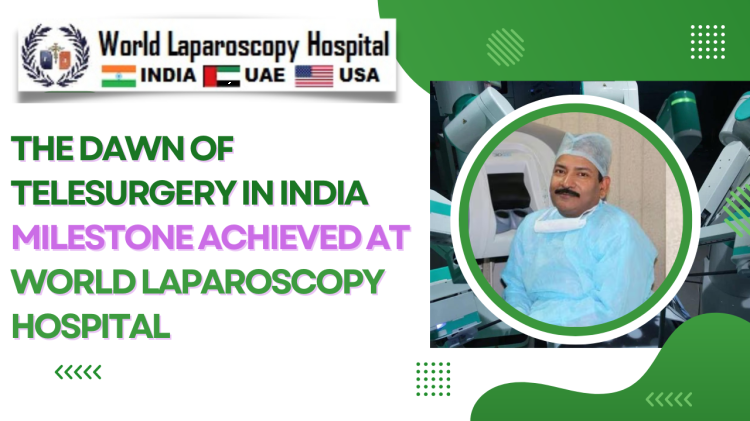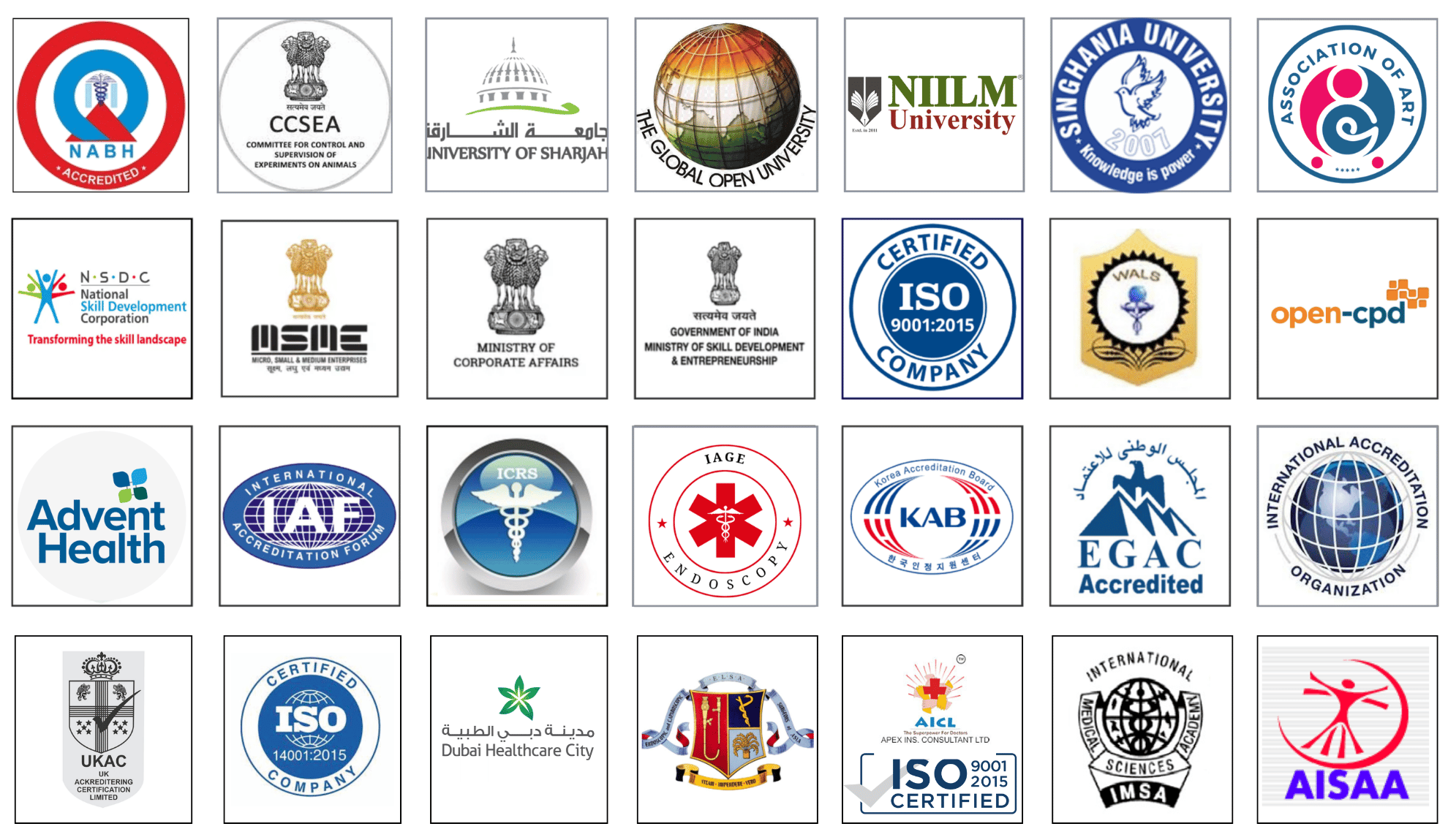In an era where technological advancements are revolutionizing medical procedures, India marked its entry into an innovative domain with the successful execution of its first telesurgery at World Laparoscopy Hospital. This landmark procedure not only showcases the hospital's commitment to embracing cutting-edge technology but also positions India on the global map of medical innovation, paving the way for future advancements in minimally invasive surgeries.
Telesurgery, or remote surgery, involves a surgeon performing a surgical procedure on a patient who is not in the same location as the surgeon. This is made possible through robotic technology and high-speed data connections, allowing the surgeon to manipulate instruments from a distance with precision and dexterity comparable to traditional hands-on surgery. The benefits of telesurgery include access to specialized surgical expertise for patients in remote or underserved areas, reduced physical strain on the surgeon, and the potential for quicker patient recovery times due to the minimally invasive nature of the procedures.
The first telesurgery in India, conducted at World Laparoscopy Hospital, is a testament to the hospital's pioneering spirit and its dedication to advancing medical care through innovation. By successfully leveraging robotic surgery systems, the hospital has demonstrated the feasibility and safety of remote surgical procedures, setting a precedent for others to follow.
This groundbreaking procedure not only highlights the technical prowess and visionary approach of the medical team at World Laparoscopy Hospital but also underscores the potential of telesurgery to transform healthcare delivery. With the ability to transcend geographical barriers, telesurgery can facilitate equal access to high-quality surgical care, making it a game-changer for rural and remote regions not just in India but around the world.
Furthermore, the success of this telesurgery initiative reflects the collaborative efforts of engineers, IT professionals, and healthcare providers, showcasing the importance of interdisciplinary cooperation in advancing medical technology. It also emphasizes the need for robust telecommunication infrastructure and regulatory frameworks to support the safe and ethical implementation of telesurgical services.
As World Laparoscopy Hospital celebrates this milestone, the implications for the future of surgery in India and beyond are immense. The successful integration of telesurgery into clinical practice can enhance surgical training, facilitate international collaboration among surgeons, and lead to innovations that further improve patient outcomes.
The Advantages of Telesurgery via Robotic Systems: Revolutionizing Surgical Precision and Accessibility
The advent of telesurgery through robotic systems represents a transformative leap in the field of medicine, particularly in the domain of surgery. This innovative approach, blending the precision of robotics with the expertise of surgeons, has opened new vistas for surgical procedures, making interventions safer, more accurate, and accessible. The core of telesurgery lies in its ability to transcend geographical barriers, allowing surgeons to perform operations remotely with the aid of sophisticated robotic arms and real-time video feedback. This groundbreaking method offers a plethora of advantages, promising a new era in healthcare.
Enhanced Precision and Control
One of the most significant advantages of robotic telesurgery is the unprecedented level of precision and control it offers. Robotic systems can execute movements with an accuracy and steadiness that surpass human capabilities, reducing the risk of human error. The robotic arms have a greater range of motion than human hands, enabling surgeons to perform complex maneuvers with ease and precision. This is particularly beneficial in delicate procedures that require intricate dissections or suturing in confined spaces.
Minimized Surgical Trauma and Faster Recovery
Telesurgery, being inherently minimally invasive, significantly reduces surgical trauma. Small incisions, precise tissue manipulation, and reduced need for physical retraction mean that patients experience less postoperative pain, lower risk of infection, and quicker recovery times. This not only enhances patient outcomes but also contributes to shorter hospital stays and lower healthcare costs.
Expanding Access to Specialized Surgical Care
Perhaps one of the most transformative aspects of telesurgery is its potential to democratize access to specialized surgical care. Patients in remote or underserved regions can receive high-quality surgical interventions from top specialists without the need for travel. This capability is particularly crucial in global health contexts, where access to surgical expertise is often limited. Telesurgery can bridge the gap between rural and urban healthcare services, offering a lifeline to communities traditionally marginalized from advanced medical care.
Surgeon Ergonomics and Reduced Fatigue
Telesurgery also introduces significant benefits for surgeons, including improved ergonomics and reduced physical fatigue. Operating a robotic system remotely allows surgeons to be in a more comfortable position throughout the surgery, minimizing the physical strain associated with long periods of standing or bending over the patient. This can potentially extend a surgeon's career longevity and reduce the incidence of musculoskeletal injuries common in the profession.
Facilitating Surgical Training and Global Collaboration
The integration of telesurgery into clinical practice opens new avenues for surgical training and education. Trainees can observe and learn from procedures conducted across the globe, gaining exposure to a wide range of techniques and case complexities. Furthermore, telesurgery facilitates real-time collaboration among surgeons, enabling expert consultation during complex procedures, which enhances patient safety and surgical outcomes.
Future Perspectives and Challenges
As we look towards the future, the continuous refinement and integration of telesurgery into healthcare systems worldwide hold the promise of making surgical care more patient-centered, efficient, and universally accessible. However, the widespread adoption of telesurgery faces challenges, including the need for robust telecommunication infrastructure, addressing cybersecurity concerns, and ensuring equitable access to this technology.
In conclusion, telesurgery via robotic systems is not just an innovative surgical technique; it is a paradigm shift in how surgical care is delivered. It promises to enhance surgical precision, improve patient outcomes, and expand access to specialized care, ultimately revolutionizing the landscape of modern surgery. As technology advances and barriers to implementation are overcome, telesurgery stands poised to redefine the boundaries of what is possible in medicine.
In conclusion, the first telesurgery in India is not just a remarkable achievement for World Laparoscopy Hospital; it is a beacon of progress for the entire medical community. It heralds a new era of surgical care that is more accessible, efficient, and innovative, reinforcing the hospital's role as a leader in the field of minimally invasive surgery. As we look to the future, the continued evolution and adoption of telesurgery hold the promise of transforming lives, one operation at a time.






